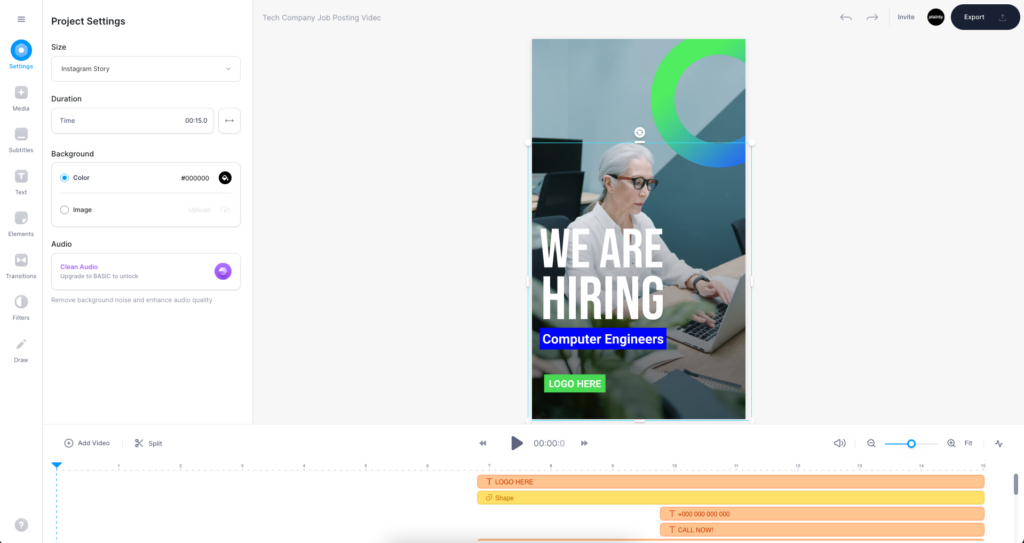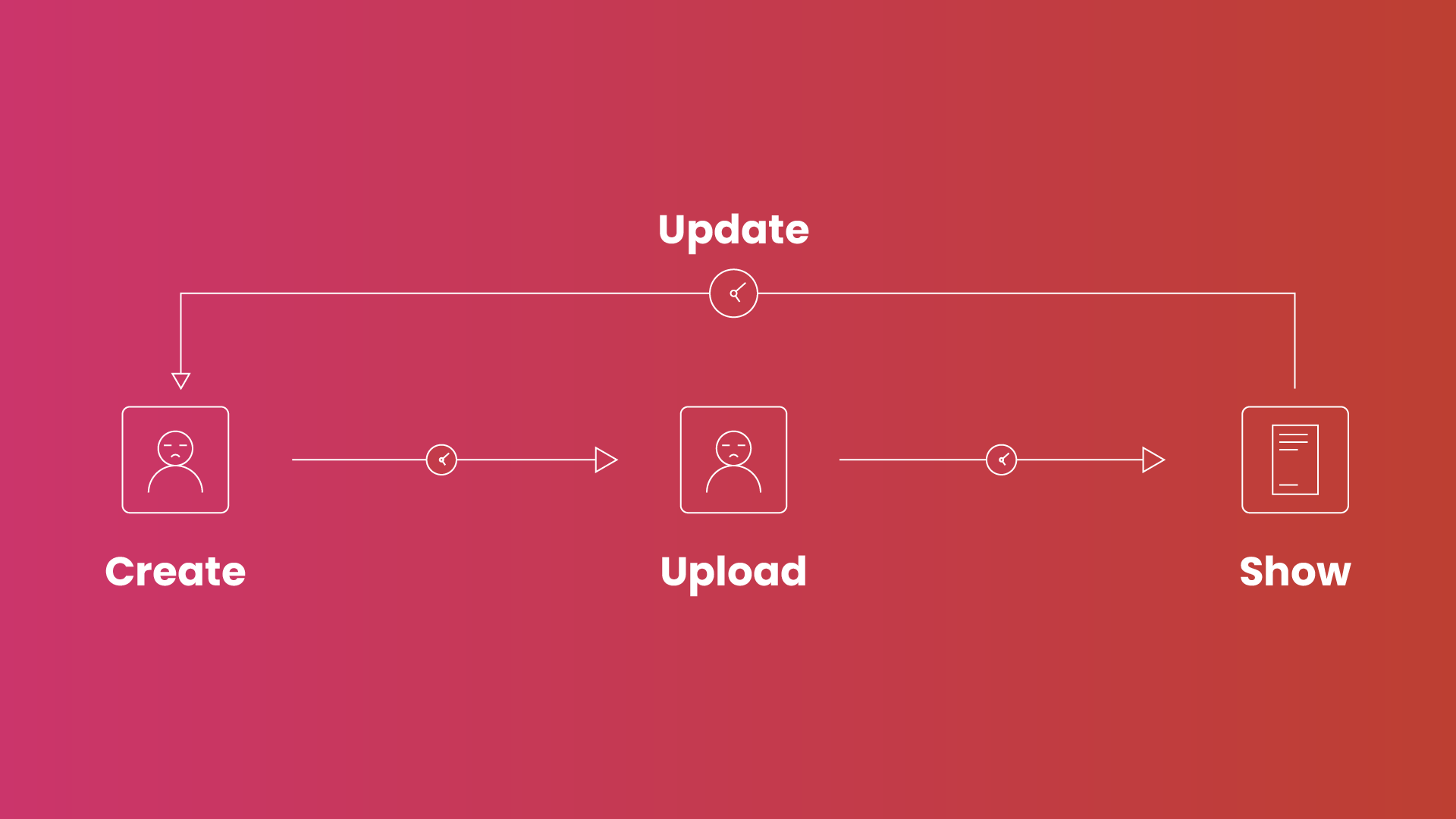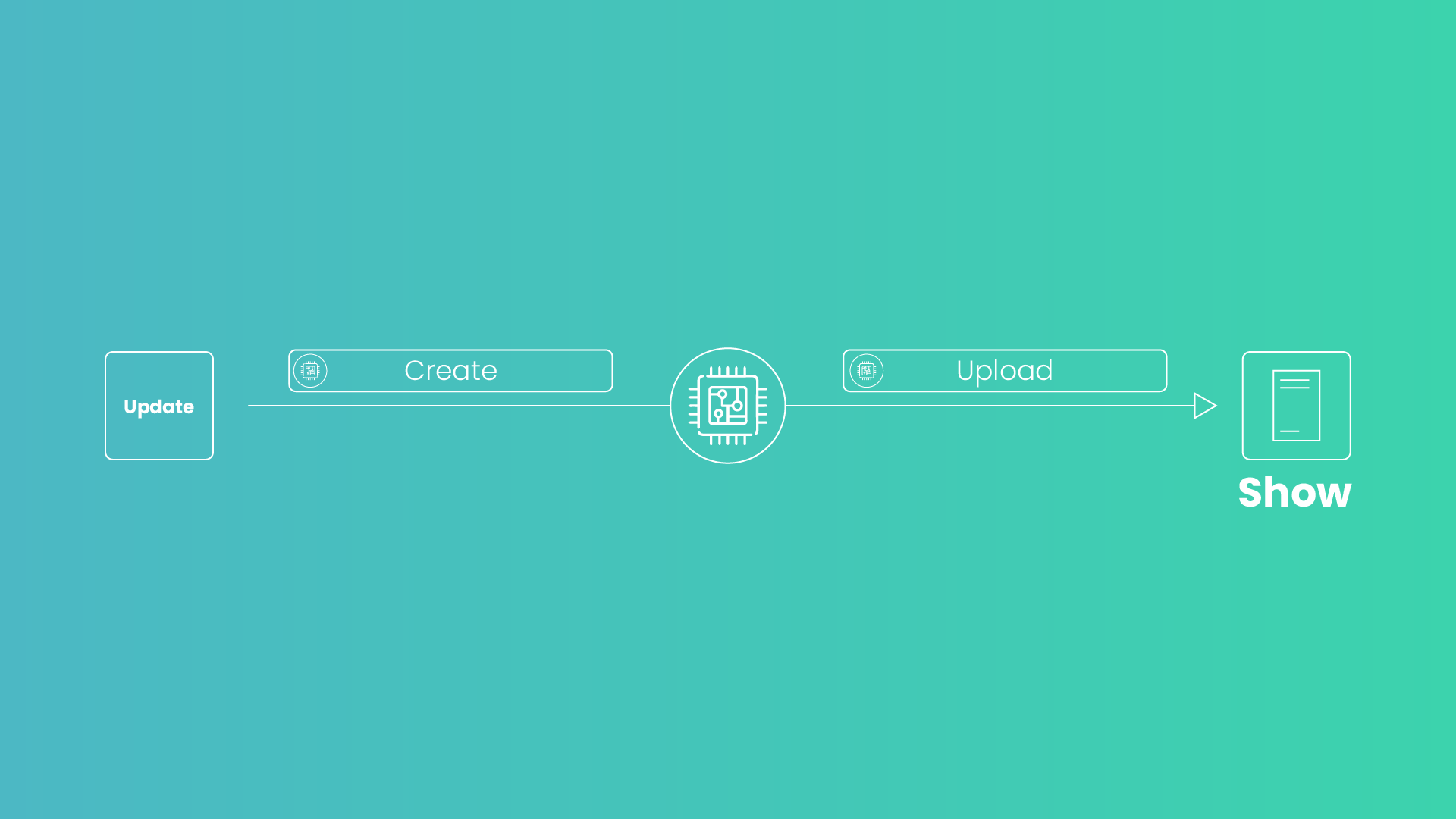Digital signage content creation - A new, revolutionary way to do it
You, my friend, are extremely lucky. Digital signage content creation has never been easier. If you were creating content for digital signage just a few decades ago, this process would be 100x harder. Literally 100x times.
This article will show you how easy this actually is, but not only that. Later, i’ll even show you a tool that can create digital signage content containing live data for you AUTOMATICALLY. That’s right, content can be created even while you sleep. More on that later.
Let’s step back and see what are the options for digital signage content creation.
- Do it yourself
- Use an agency/freelancer
- Use the built-in content creator that your digital signage provider has

Do it yourself
This is the cheapest out of the three options. There are a ton of free tools that you can use to create content for digital signage. Most of these are pretty easy to use and offer a wide variety of templates. This is good news for those who know 0 about design.
Canva
The most popular web-based content creation tool on the planet. It has a pretty generous free plan, and in most cases it will cover the basic needs that you might have. Even if you cross over to the paid plan, it’s pretty affordable at 13$ per month.

Adobe Spark
This is Adobe’s shot at a tool like Canva. It does pretty much the same thing, but in my case they have nicer templates. They also have a free plan, with an option to upgrade at $10/month.

Venngage
Venmgage is specialized in infographics. If you want to put infographics onto your screen, i’d resort to this instead of the options above. They also have convenient templates and a free plan. Their paid plan starts at 19$ a month.

If you don’t want to use any of the above, you can always use a tool that everybody is familiar with. That tool is Power Point. It has pretty limited capabilities in terms of design, but a lot of people are simply used to it and it will get the job done. Alternatively, you can use Google Slides - which is a free Google alternative to Power Point.
The tools above are focused on images. If you want to create videos, you might resort to some of these tools:
Biteable
Biteable is like Canva, but for video. Sure, you can animate stuff in Canva but Biteable is specialized in video and it has more capabilities. Also, their template library is pretty large so you shouldn’t have any trouble finding a design that works for you. They have a free plan, but it comes with a watermark. If you want to take that watermark, that’s going to cost you $99/month.

Placeit
Place it is similar to Biteable, but it’s cheaper if you decide to go for a paid plan. Their templates (in my opinion) look more sleek and modern, and also they have a lot of mockups.

Veed
Veed is a web based video editor. Their focus is on cutting clips, adding music, captions, text…etc. It’s perfect if you have live action footage that you want to edit and make better. They also have a free plan that comes with a watermark which sucks, but their paid plan comes at an affordable $18/month.

If you want to fully avoid any online tools, and avoid paying for removing the watermark you can always resort to the tools you have on your computer.
Those tools are iMovie and Windows Movie maker. Again, they are super limited in terms of capabilities, but if you want to put together a picture with some text on it, they will get the job done.
Using an agency/freelancer
If you created any kind of design material, you probably used an agency or a freelancer. Reach out to them and ask them to create digital signage content for you. At the core, a social media ad and content for digital signage are the same. They are both images or videos.
Although a more expensive way of doing this, it’s the headache-free way. By delegating this, you can take your mind off it and focus on other money-making tasks. The pros will worry about the complicated sounding stuff like typography, white space, contrast, color palettes…etc.
Even though they will handle everything, make sure to write a nice and detailed brief. The brief should contain the description of the work, the specifications of the content, its purpose, and references (if you have them).
If you don’t have an agency or a freelancer of choice, you can fall back on freelance platforms. Although they get a bad rap sometimes, a platform like Upwork can be a life saver in this job market.
Here are the results of a quick search for the query "digital signage"
A word of caution though: pay attention to the freelancer you are hiring. Vet them properly, ask for a portfolio, and set clear deadlines. If you don’t do the above, you might end up with a result that you aren’t satisfied with.
Use the built-in content creator
A lot of digital signage providers boast with this feature. In my opinion, this is the best option.
Keeping everything under the same roof is usually the best. If the built-in editor is limited in terms of capabilities though, then you should try any of the options above.
Most of the built-in editors have the capabilities of templates, adding videos, images, texts and some even widgets like weather and RSS feeds. Depending on your use case, there is a chance that you don’t even need to look for other options…built-in editors can do the work.
The built-in editor is highly specific to the provider you are using, so it doesn’t make sense to go deeper on this topic. Try out the tools you have, contact the support of your digital signage provider if you get stuck, and i’m sure they’ll be more than happy to help you.
There is a problem though with all of these options…
The problem with the current digital signage content creation
The problem is…you still need to create that content. Even if you outsource it, SOMEONE still has to make that digital signage content. Well, if you want to scale up your production, and have even more designs that comes at a higher cost.
What about live data? Sure, you can insert a widget like weather or RSS feed, but what about actual live data in the content? Let’s say you are a retailer, and you have a screen that’s showing a special offer for a pair of shoes. What happens when that pair of shoes goes out of stock?
Do you get my point now?
Digital signage content creation is not dynamic.

Someone has to create the content, then it gets uploaded, then updated, then uploaded again and you end up in an endless loop of outdated offers.
That’s why you should ditch the old way of creating content, and embrace automation.
Automated digital signage content creation

One of the tools that do this is Plainly.
Plainly is focusing on video, which is proven to convert better. This video automation tool is a game changer for digital signage content creation. It allows you to set up a workflow that creates videos automatically, on-demand, containing live data which can then be pushed to your screens automatically.
This means that you can practically forget about your digital signage screens. The content will be created automatically, and it will ALWAYS be up to date.
Let’s explain how this works.
Step 1 - Template
The first thing you’ll need to have is a video template. Any of the content creation APIs start with a template. This template will be used in combination with live data to create unique videos.
In Plainly’s case, that template is built in Adobe After Effects, which is an industry standard in creating videos. You have a few options for the template. The first one is to bring your own, the second one is to use one of our templates, and the third one is to get Plainly to create one for you (it’s like using an agency).
Step 2 - Plainly set up
After you get the template, you need to upload it to Plainly and set up the “dynamic parameters”. This means choosing what are the things in the video that will change with every new video. These dynamic parameters can be text, images, videos, audio, and colors. This setup takes around 10 minutes.
Step 3 - Integration
The third, and final step is to create the automated workflow.
This might sound daunting for anybody who’s not technical, but rest assured…there is an option for everybody. Creating this workflow consists of:
- connecting your data sources to Plainly - this can be anything, any database, any spreadsheet, or any 3rd party API that provides data
- setting up the rendering triggers - rendering can be triggered with a value change in your data source (for example, you sell the last pair of shoes), or on a regular interval (hourly, daily…)
- telling Plainly where to send the videos - send videos wherever you need them. This can be direct to your digital signs, or storage of some kind
If you have an IT department, creating this integration will be a piece of cake for them. If you don’t, however, there are two options.
The first one is to use tools like Zapier and Integromat. These tools offer you intuitive interfaces for connecting multiple apps into an automated workflow. There are a ton of tutorials on how to use them, and we also create detailed step-by-step tutorials which you can refer to.
If you don’t have the time, or don’t want to bother with any of this, Plainly can create a custom automated workflow for you that will suit your needs.
In our experience, the creation of a workflow like this takes 3-5 days. This is enough time to create a template and create the integration. What’s good about these workflows is that they are “set and forget”. You create it once, and never think about it again. If you wish, you can add new designs (new templates), but the integration stays the same.
Digital Signage Content Creation - Closing words
In a world that’s this dynamic, it doesn’t make sense to have static content, especially when you have the tools like Plainly at your disposal. Customers are getting used to a personalized advertising experience. That’s why you have to make sure that your offer is always relevant.
If you are just getting started, you should first try creating the content yourself. Dip your toes slowly, make sure to follow the good practices of digital signage content creation, and see how it goes.
Later, as you start to see the ROI on digital signage you should level up your content creation game. That’s when you should resort to automation and tools like Plainly.




